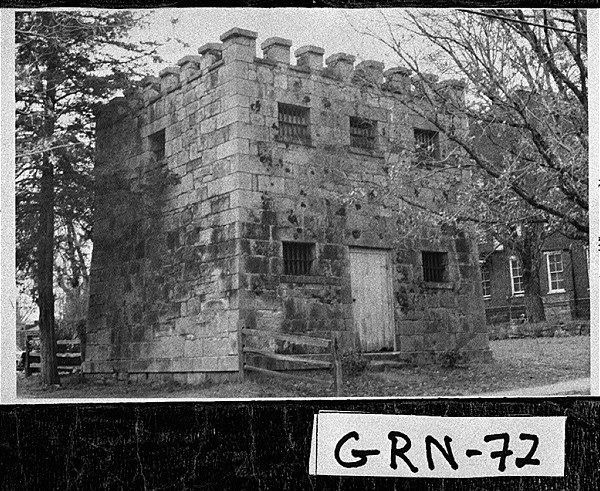This stone structure in Greene County has always intrigued me, but I’ve never really broken free from other things to research it until this week. I was prompted to “get busy” when I learned that in 1873 a man was hung there not once but twice!

This stone structure is referred to as the original Greene County Gaol which was built in 1807 using granite from a local quarry. The place is like a small fortress with walls two feet thick and earns the designation as the oldest standing masonry jail in Georgia.
Patterned after an European bastille prisoners could be chained to the walls. A trapdoor existed on the second floor where hangings could take place. The Greene County Gaol only saw one hanging during its period of use from 1807 to 1895 when a new jail was built.
The story begins in May, 1871 when Sarah Richards, approximate 48 years old, was found murdered in her home located in the Penfield district of Greene County. News reports at the time indicated “her charred and disfigured remains were found among the ruins, but no clue could be obtained” regarding what happened.
Fast forward eighteen months later when an unidentified woman appeared at the local jeweler in Greensboro inquiring about a watch repair. The jeweler instantly recognized the watch as the property of Sarah Richards and promptly contracted the authorities.
The watch was traced to Wiley Baugh who advised he had obtained it from George Copeland who also was known to use the last name Simpson. Both Wiley and Copeland were “held to bail in a bond of one hundred dollars.” The public was outraged and called the bail amount a “mockery of justice”.
George Copeland ended up standing trial – charged with the rape and murder of Sarah Richards as well as arson connected with the fire to conceal the murder in March, 1873. Copeland was convicted and six months later was sentenced to hang on October 24th.
“On various occasions Copeland implicated others…but admitted just before he was executed that he did it alone, and no one had anything to do with it but himself, and that he committed all of the offenses with which he was charged.”
The hanging took place at midnight on the night of October 24th, and as the trapdoor was released Copeland fell through the hole. The rope snapped in two causing him to fall to the first floor. He was examined, and it was determined he was “in a dying condition.”
Another rope was employed and Copeland was hoisted up and re-hung from the gallows where he remained for a period of twenty-five minutes until the physician pronounced him dead.
There was one thing I caught in the newspapers as I uncovered the story. Both Wiley Baugh and George Copeland were identified as freedmen. This story was reported in 1872 and 1873.
Weren’t all African Americans freedmen at that time?
I find answers to questions, but generally the answers lead to more questions.




Leave a Reply